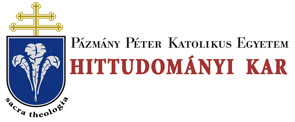Folia Theologica et Canonica, Supplementum (2016)
Szabolcs Anzelm Szijromi, O.Praem., Relationship among the Holy See, Czech-, Polish-and Hungarian Kingdoms in the 13"'-14" century
RELATIONSHIP AMONG THE HOLY SEE, CZECH-, POLISH- AND HUNGARIAN KINGDOMS 207 century which is well proved by the encyclical letter of Pope John XXII in January 23rd 1318.4# Counterexample for the contemporary heretic movements, those faithful’ life who exemplary followed the Catholic teaching and made significant influence on the secular society, improving the authentic Christian idea. Regarding the Czech, Polish, and Hungarian Kingdom in the 13,h—14lh century we must remember here the holy life of St. Elizabeth of Hungary (t 1231 ), St. Margit of Hungary (f 1270), St. Agnes of Prague (t 1282), St. Kunigunda of Poland (+1292), Blessed Jolán (Jolenta) of Poland (t 1298), St. John of Nepomuk (f 1393), and St. Hedwig (t 1399). II. The General and Particular Councils and the Interaction among the Czech. Polish, and Hungarian Local Councils The direct influence of the Roman then general councils on the particular or local councils (or synods) was obvious from the time of Pope Gregory VII (1073-1085).4" We know from the signature-lists, that for example John, Archbishop of Esztergom (1205-1223); Robert, Bishop of Veszprém; and Urias, Benedictine Abbot of Pannonhalma (St. Martin’s Hill) were present at the Fourth Lateran Council in 1215. As compared it with the participation at the Council of Lyon I, which was convoked on January 3,d 1245 for June 26lh 1245, and where had appeared about 150 bishops - but many convoked representatives were not able to arrive because the military situation at Eastern Europe (i.e. Mongolian invasion) and also at the Holy Land (i.e. Saracens)5" - from Hungary only the bishop of Pécs could be present.48 * * 51 Analyzing the Polish local councils, we must refer to the Councils of Lenczig, of Krakow and of Wroclaw. Within these assemblies certainly the most significant are the Councils of Lenczig in 1180, in 1197, in 1226, and in 48 Ioannes XXII, Litt. Enc., Gloriosam Ecclesiam (23 ián. 1318): Gasparri, P. - Serédi, I. (ed.), Codicis iuris canonici fontes, II. Romae 1923. 34-35. 4’ Cf. Gilchrist, J., Canon Law Aspects of the Eleventh Century Gregorian Reform Programme, in Journal of Ecclesiastical History 13 (1962) 21-38. Fuhrmann, H„ Gregor VII., “Gregoria- nische Reform”und Investiturstreit, in Greschat, M. (ed.), Gestalten der Kirchengeschichte, XI (Das Papsttum L), Stuttgart 1985. 155-175. Capitani, O., Ecclesia romana e riforma: tildas in Gregorio VII, in Chiesa, diritto e ordinamento della 'societas Christiana' nei secoli XI e XII (Miscelenea del centro di studi medioevali 11), Milan 1986. 89-112. Stickler, A., / presupposti storico-giuridici della riforma gregoriana e dell'azione personale di Gregorio VII, in Studi Gregoriani 13 (1989) 1-15. Szuromi, Sz. A., Pre-Gratian Medieval Canonical Collections - Texts, Manuscripts, Concepts - (Aus Recht und Religion 18), Berlin 2014. 59,67, 73. 5,1 COD 273. 51 Fejér, G. (ed.), Codex diplomaticus Hungáriáé, ecclesiasticus ac civilis, I-XLV. Buda 1829- 1866. IV/I. 298; cf. Fraknói, V., Magyarország egyházi és politikai összeköttetései a Római Szent-Sz.ékkel, I. 64.
